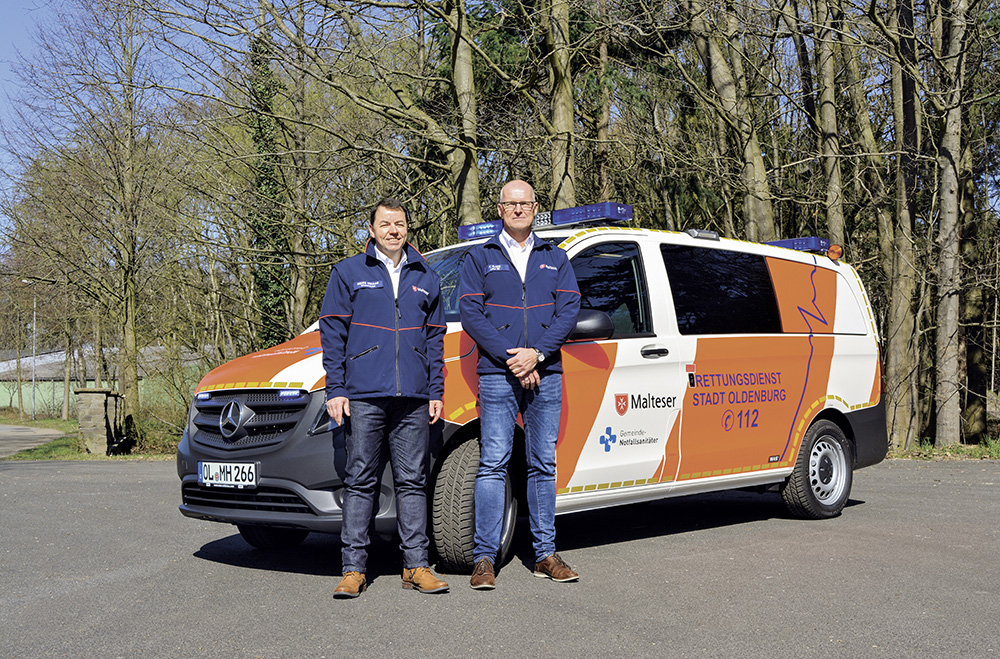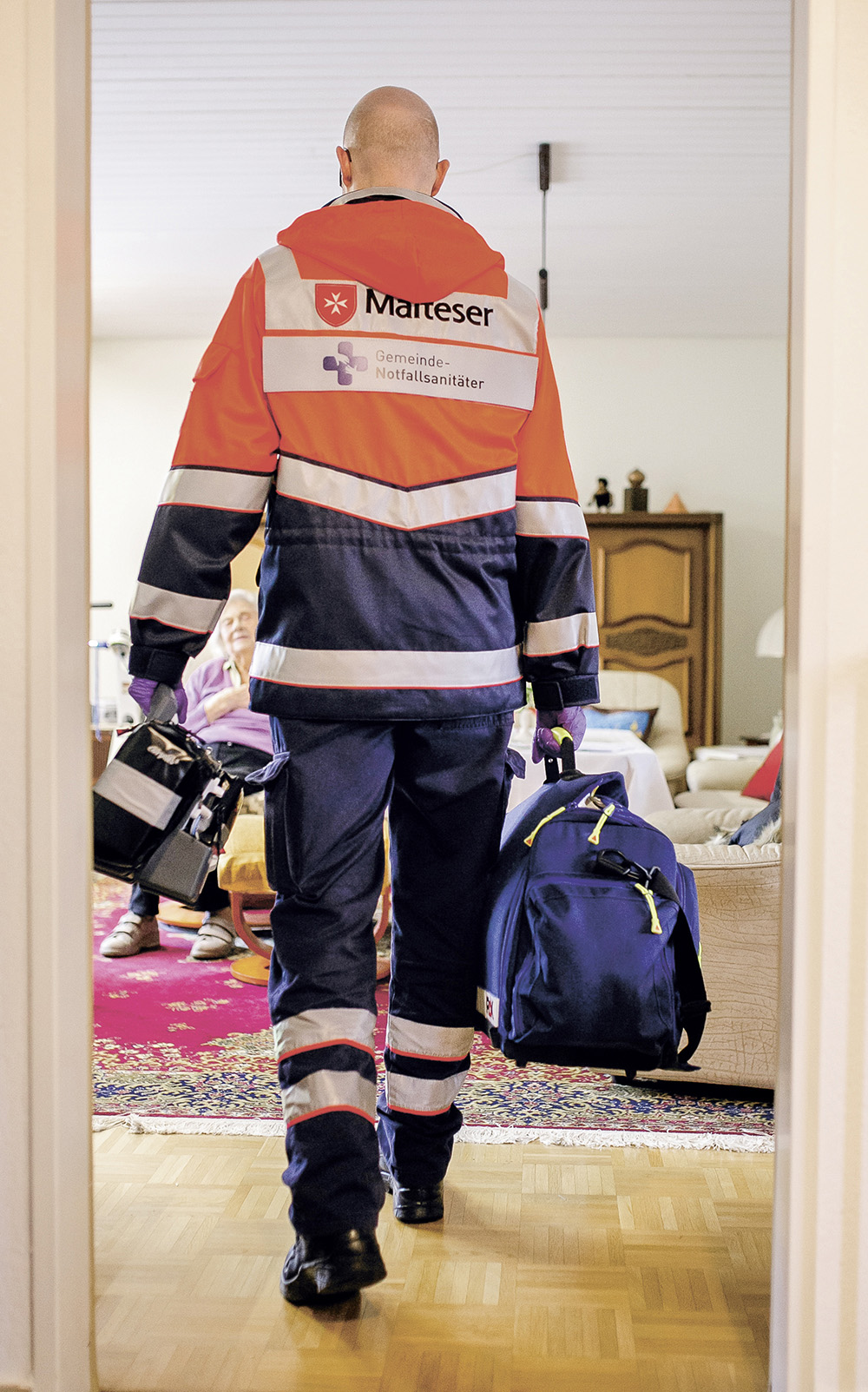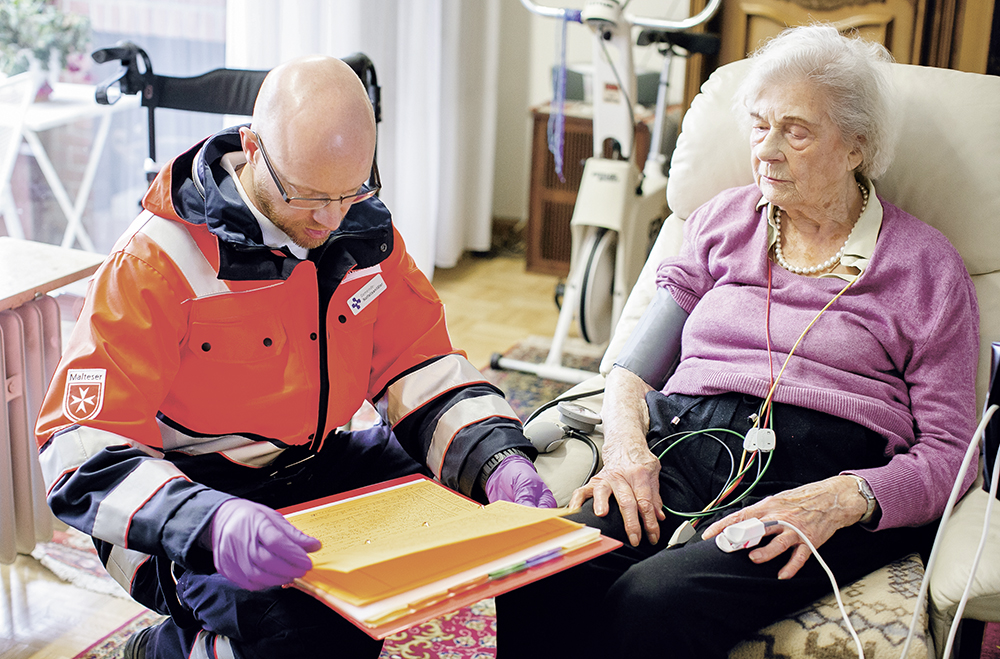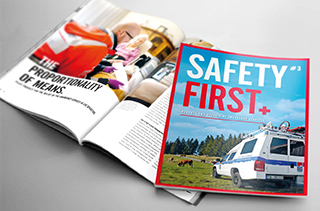

Do you have a slight feeling of dizziness when you get up? A violent coughing attack after overcoming an apparent case of bronchitis? Googled vague symptoms and panicked? If in doubt, many people prefer to call the emergency services immediately. Frequently, those affected are unable to judge for themselves whether they can confidently wait until their GP's Monday office hours. In other cases, overburdened relatives or concerned third parties prefer to play it safe by dialling the emergency services – in the truest sense of the word. There are many reasons for this, and even if the frequency of such calls suggests a certain increase in the population's sense of entitlement and need for security, it can be assumed that no one will let a rescue team arrive for fun or boredom. Rising deployment figures are much more likely to be due to demographic change and the reduction of hospitals and accident and emergency departments, particularly in rural areas. If the nearest hospital appears to be too far away for a taxi ride, ambulances are called more quickly.


Experts now even assume that an annual increase of 5% in the number of rescue operations can be expected. The majority of these missions are general assistance requests, which do not necessarily require a fully equipped ambulance. In combination with the already problematic shortage of skilled workers, this tension can, in the worst case, lead to real emergencies not being treated in time, because the vehicle and crew were ordered just for a "taxi ride".
The phenomenon of unnecessary rescue operations is, by the way, neither new nor national. Studies in Finland, England and the United States have also observed an increase in the number of non-life-threatening missions, as Frank Flake has demonstrated in detail in the "Community Emergency Medical Technician Concept". However, Frank Flake, Head of the Oldenburg District Emergency Preparedness Department of Malteser Hilfsdienst gGmbH, has not only collected information and summarised the problems, but also, together with all project participants from the city of Oldenburg and the districts of Vechta, Cloppenburg and Ammerland, provides a possible answer to the increasing number of deployments: and that's emergency community paramedics.

This specially trained rescue staff could care for patients who have dialled the emergency number in a non-emergency situation where an ambulance isn't required. Without an ambulance does not, of course, mean without a mobile vehicle and equipment. Emergency community paramedics travel in cars or vans, comparable to an ambulance emergency response vehicle with identical equipment. Since the beginning of 2019, the concept has been tested in real operation in a pilot project in parts of the districts of Ammerland, Cloppenburg, Vechta and the entire city of Oldenburg. We met Frank Flake to talk about the background and initial results of the project.
FRANK FLAKE, HEAD OF THE OLDENBURGER DISTRICT EMERGENCY PREPAREDNESS DEPARTMENT OF MALTESER HILFSDIENST GGMBH, IN AN INTERVIEW ABOUT THE PILOT PROJECT FOR EMERGENCY COMMUNITY PARAMEDICS.
Emergency community paramedics have been on duty since the beginning of 2019. Is it possible to identify trends after the first few months and to report initial experiences?
Yes, this is possible and the first experiences are very much positive. In the city of Oldenburg, the number of deployments is rising continuously and currently stands at 5-6 deployments in 24 hours. This already provides a noticeable relief for the rescue service.
How long did it take from the first idea to implementation at the beginning of the year and what levers had to be set in motion?
It took about 2.5 years of development and persuasion work. We started with the initial ideas at the end of 2015. Both the interior ministry and the funding agencies were quickly convinced. We then had to overcome the financing hurdle together. Then a curriculum had to be written. Of course, we also looked at what other countries are already doing. We met on a monthly basis in the working group and compared the state of affairs.
Did you have any fellow campaigners right from the start or did you have to convince them?
We had fellow campaigners right from the start. The idea immediately fell on fertile ground with the rescue service supporters.
To what extent have your personal experiences in the rescue sector influenced you?
They have influenced me a lot. It has been my endeavour for years to optimise the rescue service and, of course, to improve the position of rescue personnel in terms of professional policy. In my experience, problems have to be tackled. Doing is better than philosophizing about how bad everything is. This does not get us any closer to a solution and does not correspond to the truth either. There will be no stopping development. We can't change people either, but we can find solutions. From my point of view, anything is allowed. You have to try things out to find the best solution in the end.
Were you confronted with the fear that, in the long run, the emergency community paramedics would encourage citizens to dial the emergency call even more quickly because of petty little matters, because the inhibition threshold would be reduced even more if they knew that no actual rescue team was going to be deployed?
We were a little worried about this. But we can't be immediately alarmed. As a component of emergency rescue (112), you have to do this through the control centre and the emergency community paramedic is not simply alerted. If it is a case of a deployment for the medical on-call service, this is also passed on there. Only if all other aids fail or are not attainable and it concerns a low-threshold rescue service deployment, the emergency community paramedic comes. In this respect, the danger is small. We can also observe this and will then implement countermeasures.
Could the emergency community paramedic develop into a separate occupational group or a kind of parallel "emergency service" for non-life-threatening cases?
Yes, that's our hope. Revaluation of the profession and an additional rescue device. From our point of view, this would help everyone in the end.
The project will be scientifically supported and evaluated during the trial phase by the Universities of Oldenburg and Maastricht as well as Klinikum Oldenburg (a hospital in Oldenburg). How is this implemented in practice?
There are scientific and medical protocols that are evaluated. Interviews are also conducted. We all meet once a month and talk about the results and the next necessary steps.
Was it clear to you from the beginning that emergency community paramedics would be travelling with WAS vehicles and how they should be equipped?
As a long-standing customer, that was clear in my case. Here I have the advantage that WAS already knows what I value. So there was no alternative for me. In addition, it pays off to implement the same expansion concept for all vehicles. This makes it easier for the emergency services to find their way around in the vehicle and the vehicles of the emergency community paramedic can also be used normally in the regular rescue service.

This text was first published in the WAS customer magazine „Safety First“. You can request a free copy of this and many other interesting topics by sending an e-mail to marketing@was-vehicles.com.





